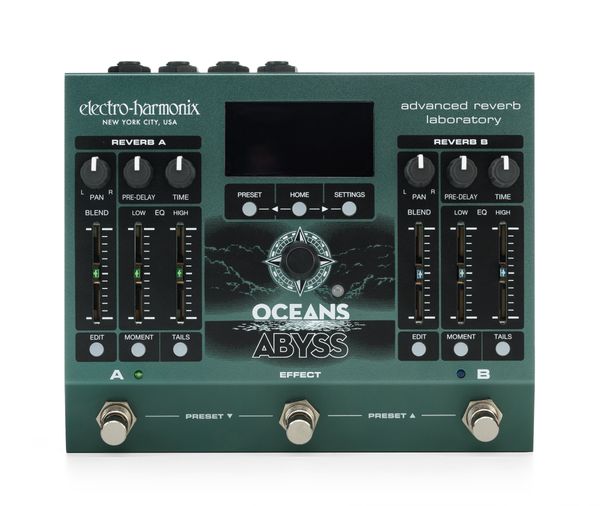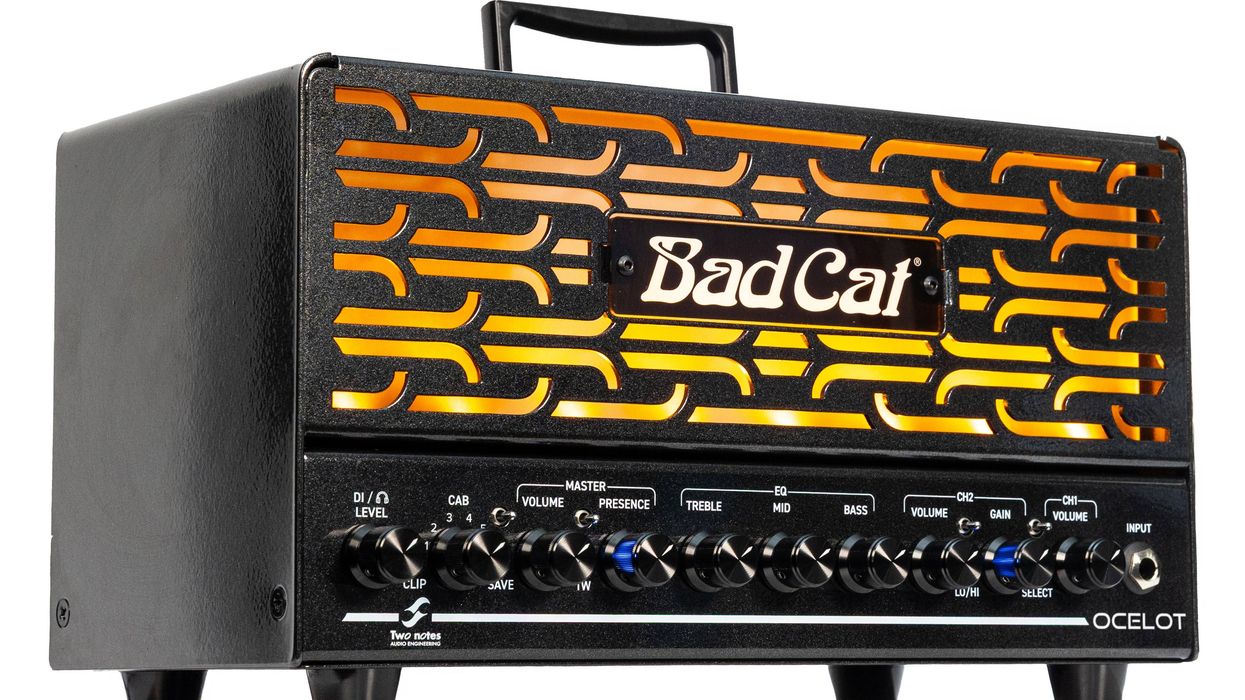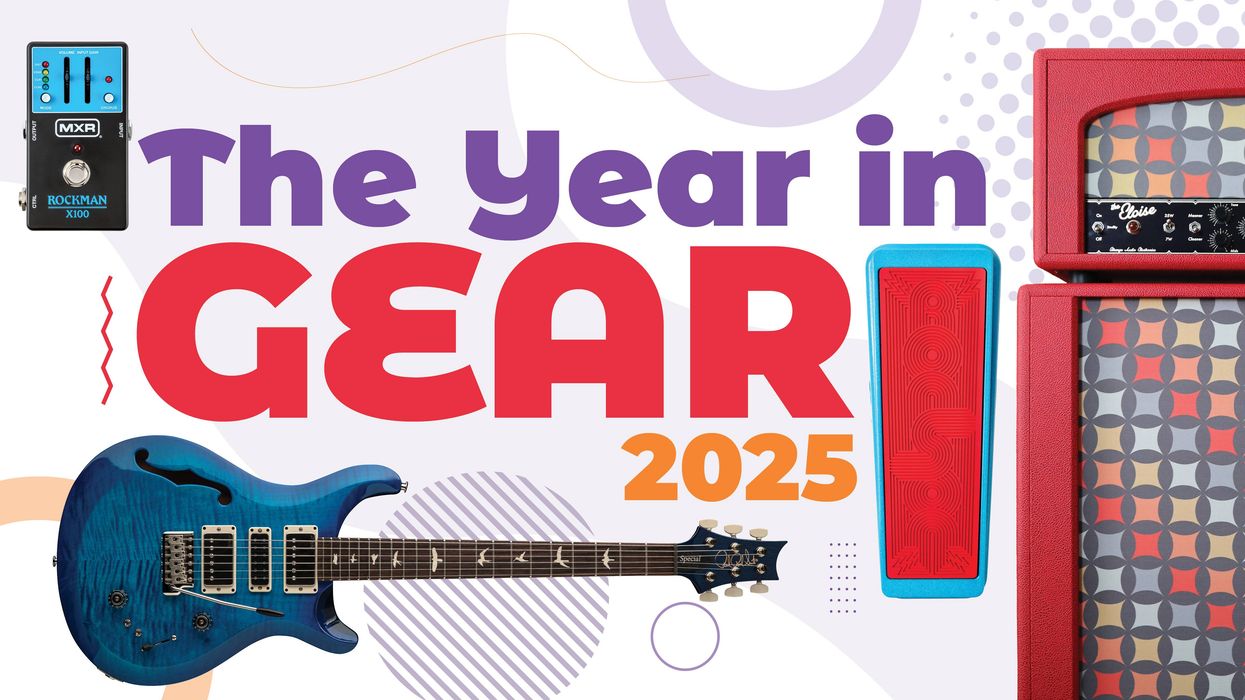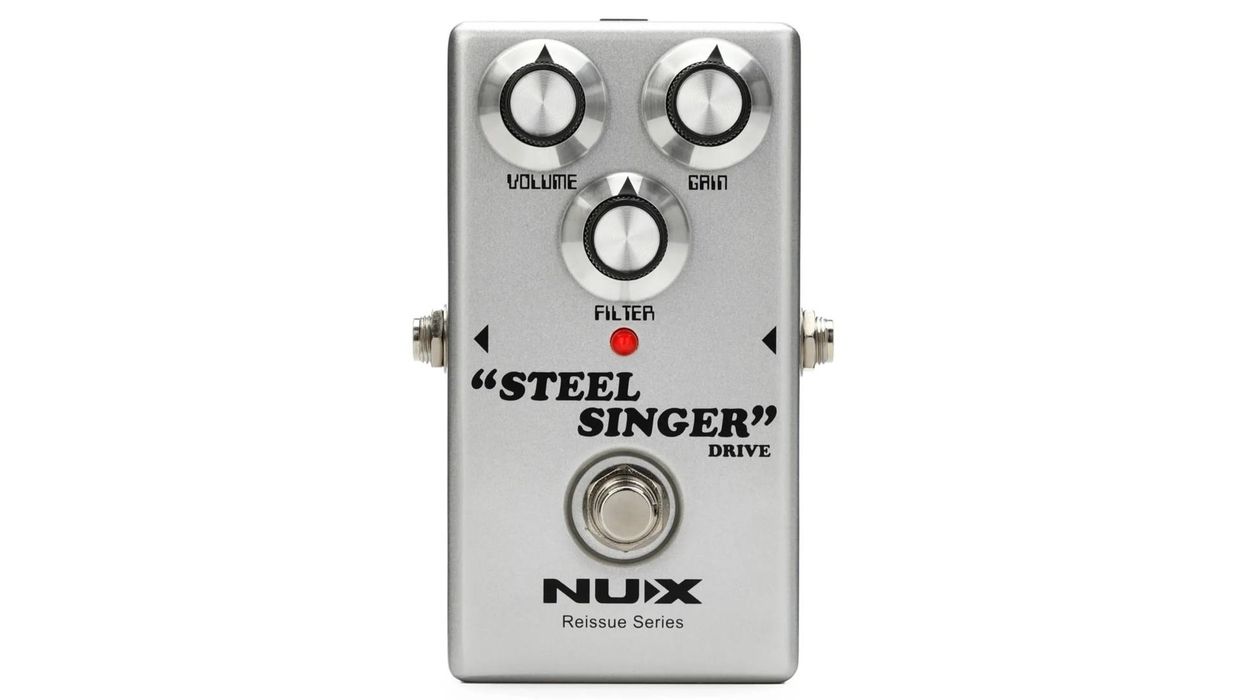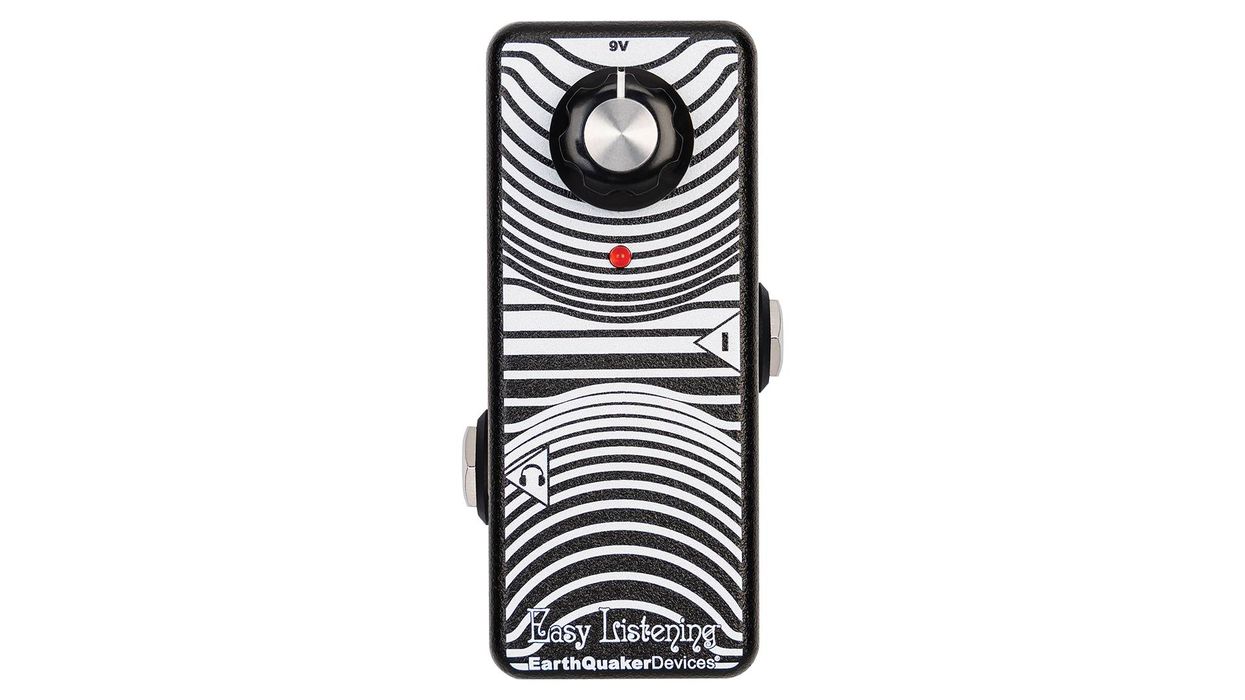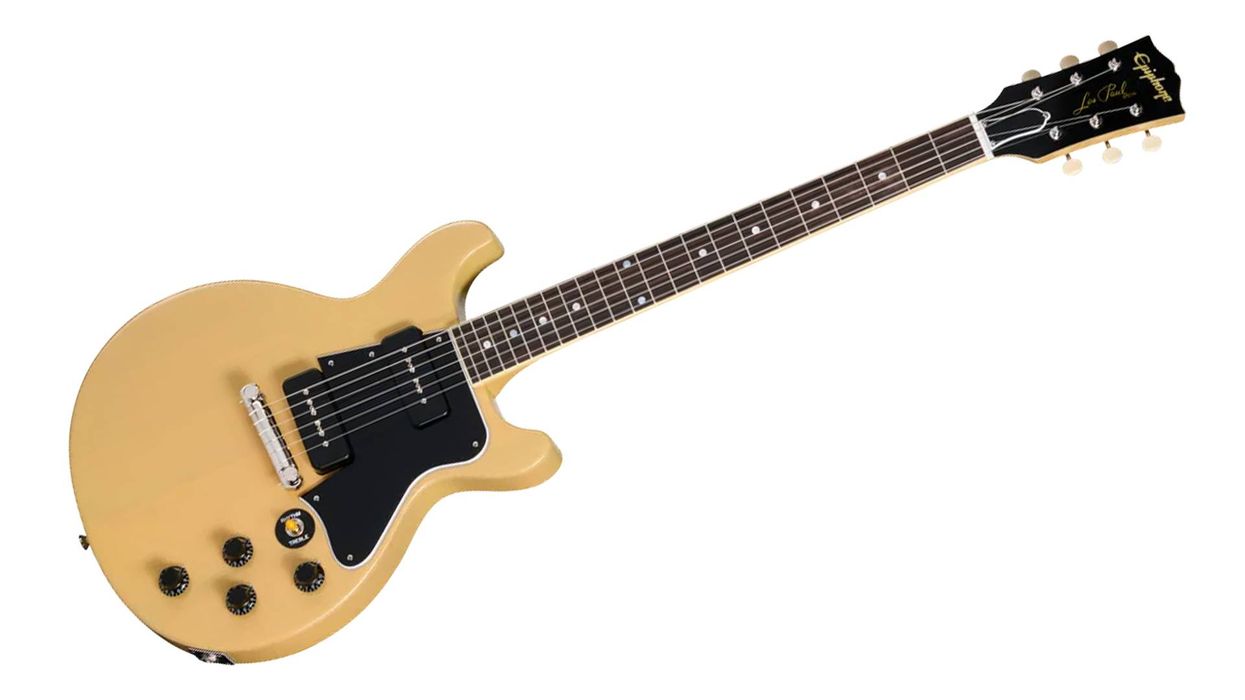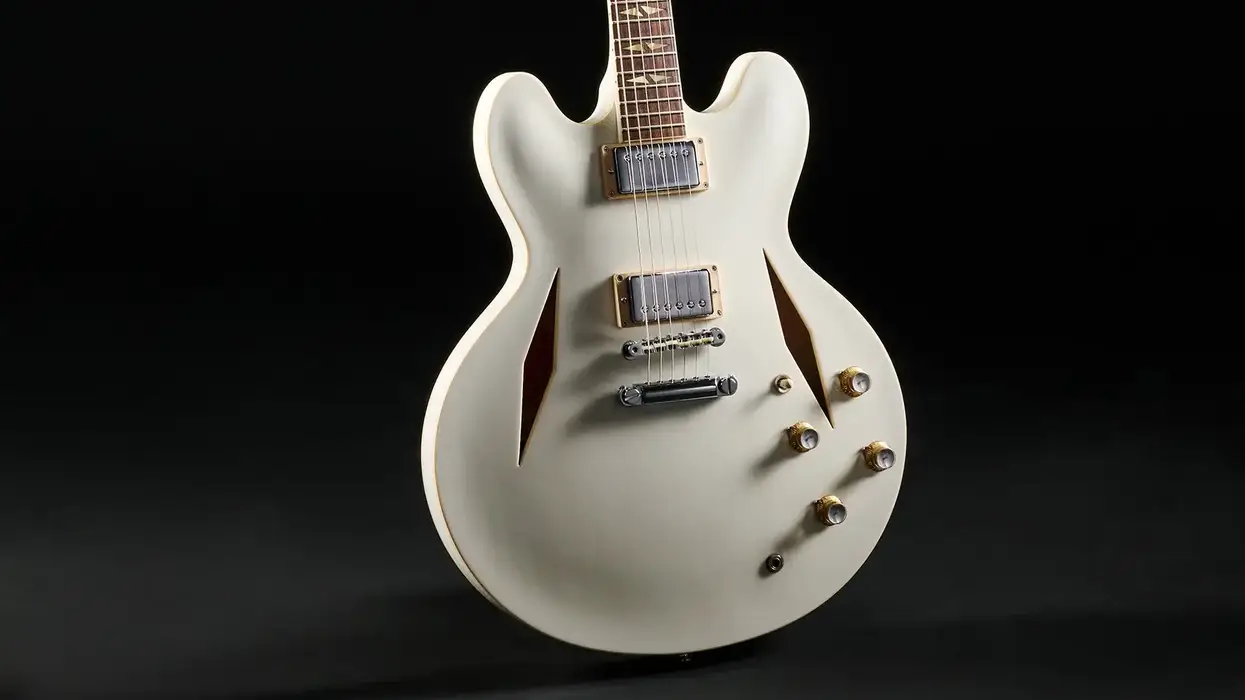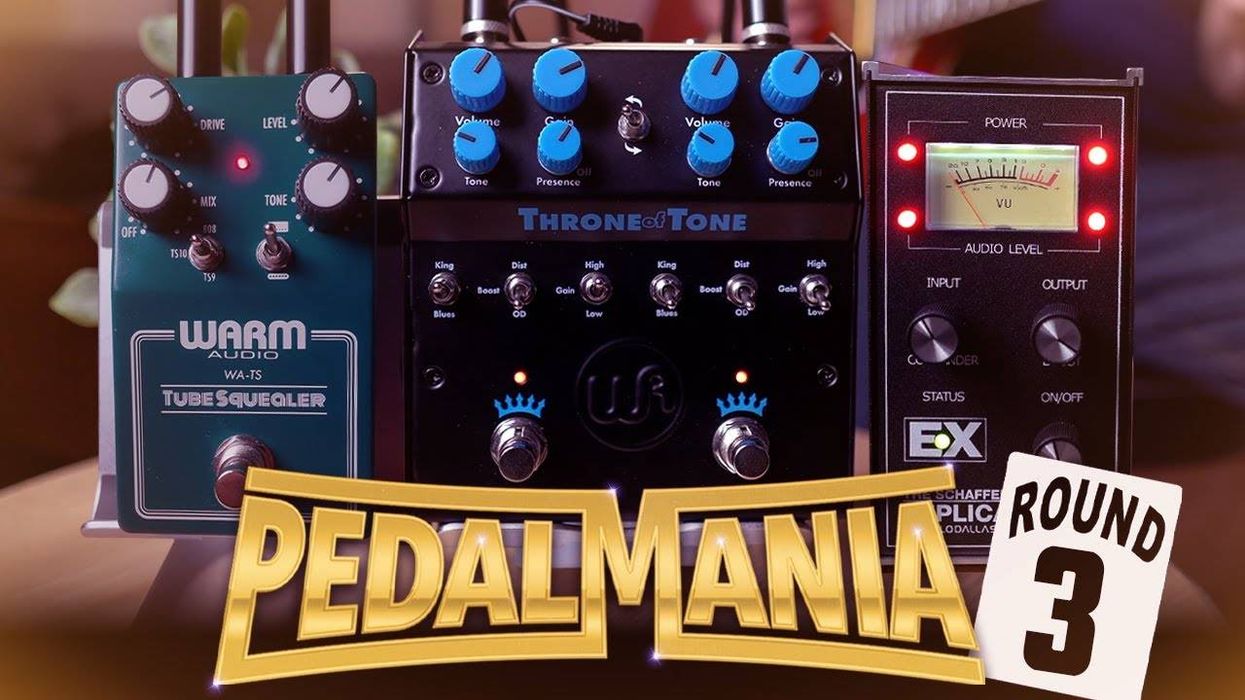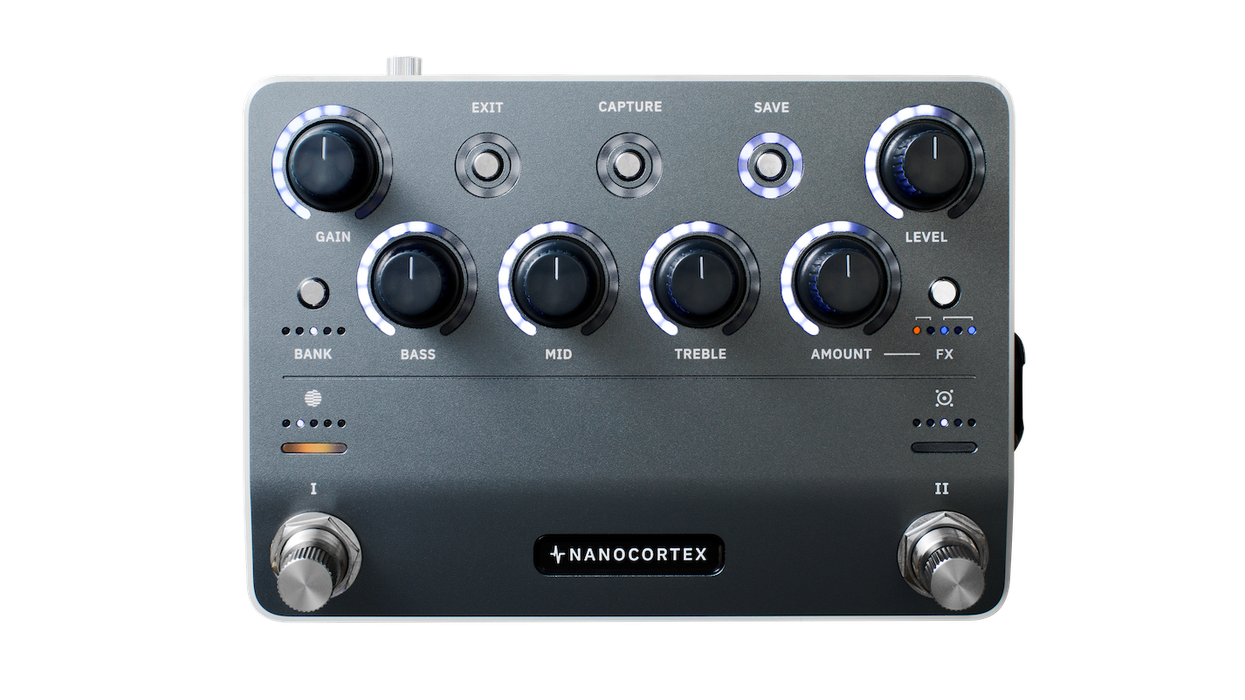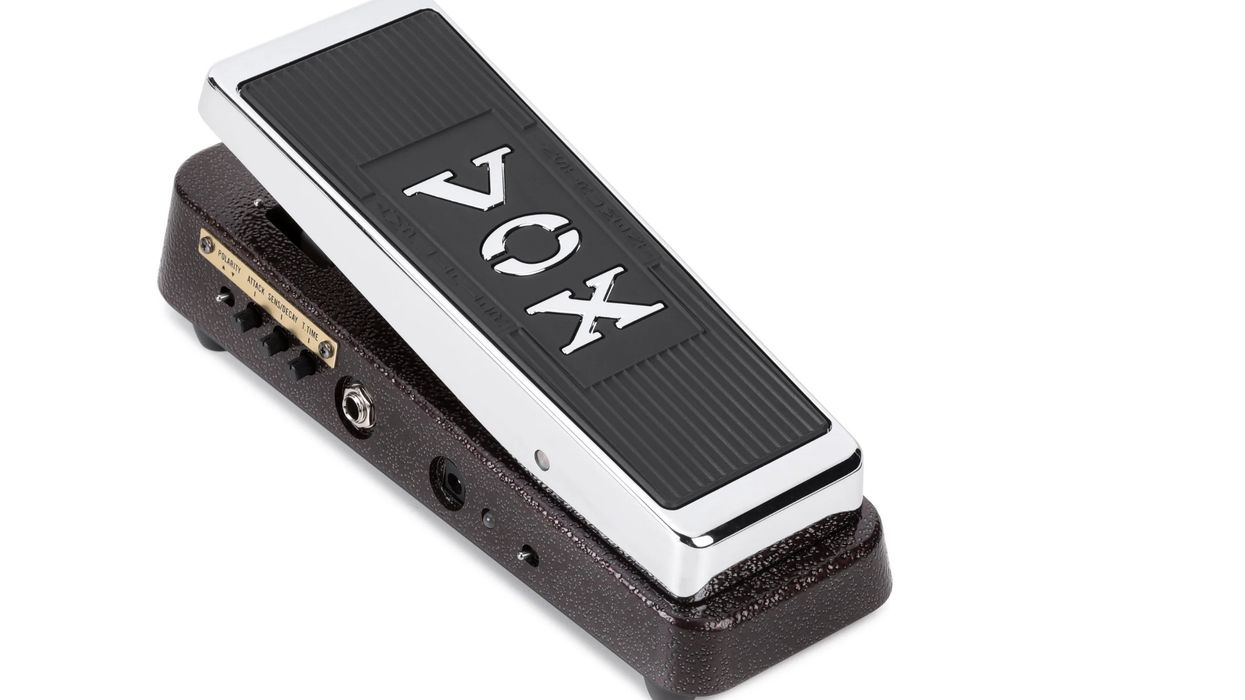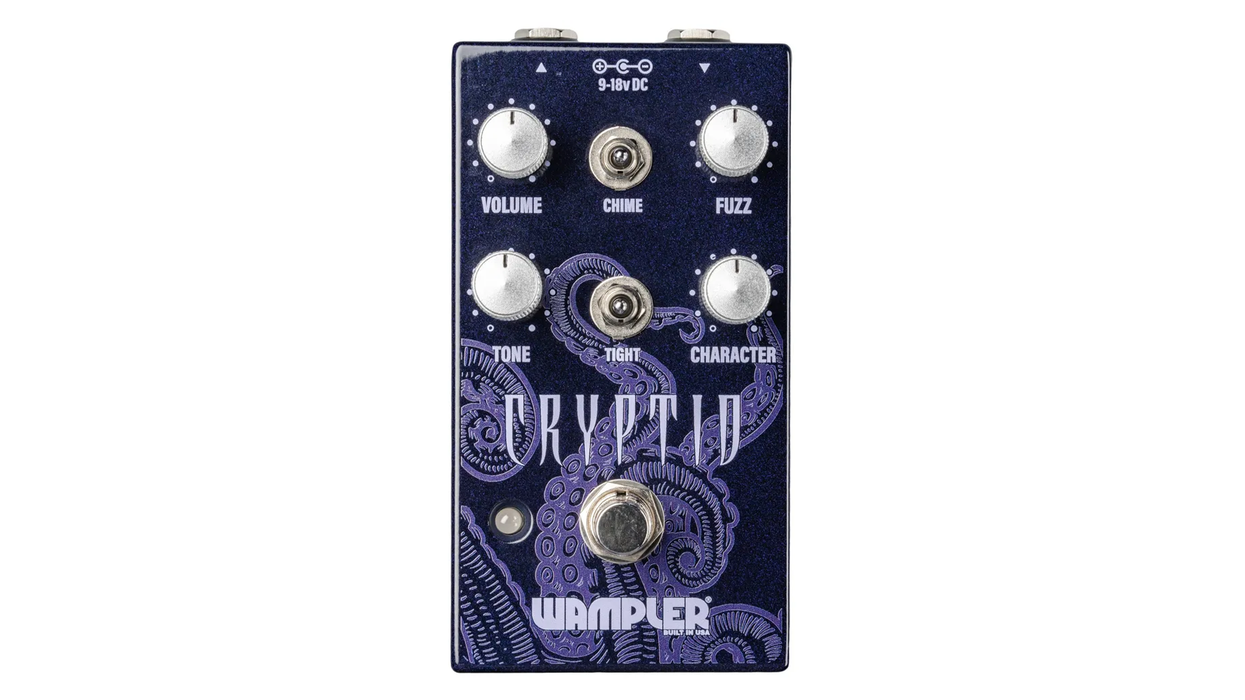Abyss is right. Electro-Harmonix’s Ocean’s Abyss, with two stereo reverbs and 10 reverb types, is fundamentally a reverb pedal. But it is deeper than that. Much, much deeper. EHX calls the Abyss an Advanced Reverb Laboratory. I’d venture that it is more like a reverb-centric multieffects unit, because the Oceans Abyss enables you to add effects that include chorus, distortion, delay, and bit-crushing to the expansive array of reverbs. But I’m not even sure my modified description does the pedal justice. It is a sound-design machine of impressive power—especially if you have the time and will to explore the breadth of its functions.
For a pedal that makes so many sounds, the Oceans Abyss’ control layout is fairly straight ahead, and compared to some of EHX's other superpedals it’s actually downright economical. The center screen displays a virtual pedalboard where you can manipulate effects and signal routing via a control knob and just a few buttons. The reverb controls themselves, meanwhile, are easy to tailor via a knob-switch-and-slider array that enables adjustment of effects blend, EQ, pre-delay, reverb time, pan position in a stereo field, and more. The input/output array is capable but straightforward, with stereo I/O, effects send and return, plus MIDI, USB, and expression-pedal capability.
Deep Diving
The individual reverb sounds in the Abyss are excellent, which, given my experience with previous Oceans-series reverb pedals, is what I would expect. The more complex factory presets range from weird-but-inspiring to verging on impractical. But the simpler reverbs exude elegance. Even the other built-in effects are incredible. I got delightfully lost in the bit crusher for some time, dialing in a very interesting and buzzy fuzz tone.
“The simpler reverbs exude elegance.”
The factory presets are great jumping-off spots and rewarding to use. But to take full advantage of the pedal’s capabilities—and, perhaps, to justify the lofty $495 price—you’ll need to spend significant time with the Abyss and its manual. Creating and editing presets (you can save up to 128) isn’t always intuitive. For many users, customization will be easier using the available desktop patch editor or the not-yet-available EHX patch editor app. Even power users may be hard-pressed to utilize all of the Abyss’ capabilities. I am anxious now, knowing that somewhere in my house the Oceans Abyss is flashing red—still signaling intolerance of my refusal to fully commit to a pre-delay time.
In name, function, and price, the Ocean’s Abyss is much more than its predecessor, Oceans 12. It’s seemingly infinite, endless in every direction. Whether it’s a fit for you will come down to your appetite for exploration and study, and the scale of your musical ambitions.

